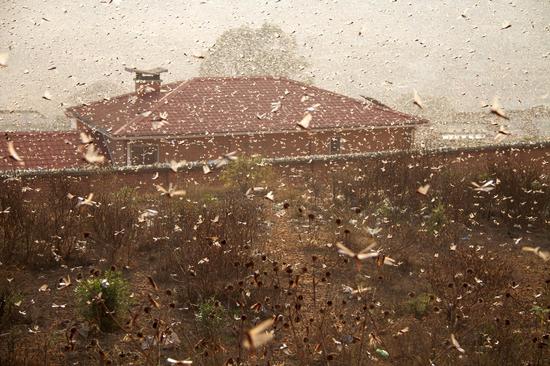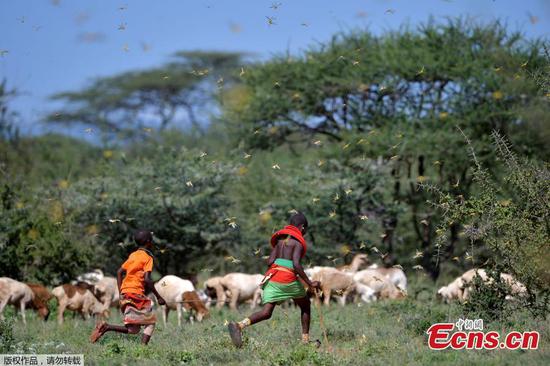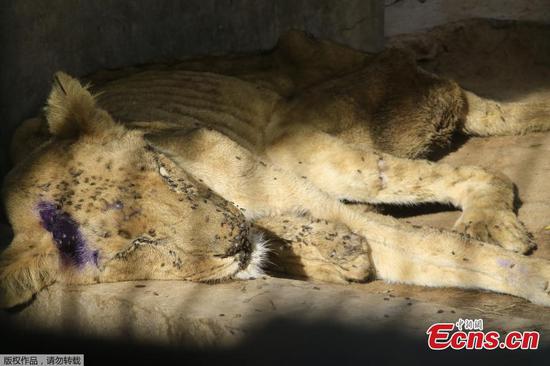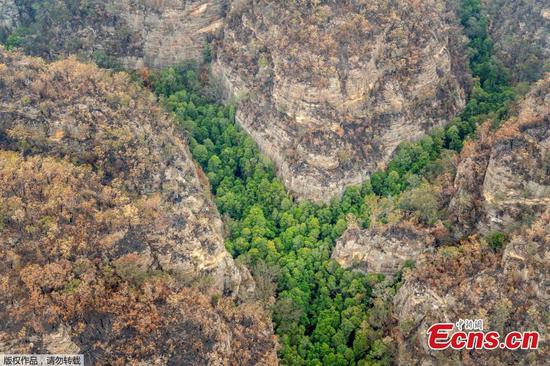
The United Nations Food and Agriculture Organization (FAO) on Tuesday warned that large and numerous desert locust swarms have continued to threaten food security of the Horn of Africa (HoA).
The United Nations Food and Agriculture Organization (FAO) on Tuesday warned that large and numerous desert locust swarms have continued to threaten food security of the Horn of Africa (HoA).
"In Ethiopia, ground and aerial control operations continue against immature swarms in Somali and southern Oromiya regional states," the FAO said in its desert locust situation update issued on Tuesday, as it emphasized similar major food security threats across various other HoA countries due to the desert locust breeding.
Noting that recent weather in East Africa has created conditions that favor rapid locust reproduction, the FAO stressed that "the numbers of crop-devouring insects there could grow 500 times by June if left unchecked."
"Some swarms are maturing while others are moving south and west into the southern parts of Ethiopia with at least one swarm reaching the edge of the Rift Valley in the Southern Nations Nationalities and People Region (SNNPR)," it added.
According to figures from the FAO, about 6,000-hectares of land were treated by air so far this month in Ethiopia amid the spread of large desert locust swarms in the East African country and its neighboring Horn of Africa countries.
The FAO further stressed that immature and maturing swarms have also continued to arrive in northeastern Kenya from neighboring Ethiopia and Somalia. The swarms are moving throughout northern areas in Mandera, Wajir and Marsabit counties and have reached central areas of Isiolo, Meru North and northern Laikipia.
"Some swarms in the north of Kenya have moved back into southern Ethiopia while others are now mature and laying eggs that will hatch after about two weeks, giving rise to hopper bands in February and March," the FAO said.
In Somalia, control operations are in progress in the northeast (Puntland) while maturing swarms continued to move southwards in central and southern areas, it was noted.
It also stressed that "there remains a high risk of a few swarms appearing at any time in the southeast of South Sudan that are coming from adjacent areas of northwestern Kenya, flying north through the Rift Valley or northwest from Marsabit county.
The FAO also indicated that "a moderate risk of few swarms appearing at any time in the northeast Uganda" from adjacent areas of northwestern Kenya until about the end of January.
According to the FAO, desert locust breeding is in progress and hopper groups and bands are present on the Red Sea's northern coast in Sudan, as well as on the coast of Eritrea and Yemen.
Last week, the FAO had also warned over "an unprecedented threat to food security and livelihoods" in Ethiopia and neighboring Horn of Africa countries due to the spread of desert locust swarms.
"Numerous and very large swarms pose an unprecedented threat to food security and livelihoods in the Horn of Africa," the FAO said in a statement, as it emphasized the spread of desert locust across parts of Ethiopia and other Horn of Africa countries mainly Somalia, South Sudan and Kenya.
Last month, the FAO had disclosed that desert locusts have invaded nearly 430 square-km of land in Ethiopia's major crop-producing regions over the past two months, consuming about 1.3 million metric tons of vegetation.
The desert locust (Schistocerca gregaria), which is considered as the "most dangerous of the nearly one dozen species of locusts," is a major food security peril in desert areas across 20 countries, stretching from west Africa all the way to India, covering nearly 16 million square kilometers, according to the UN.
Recent figures from FAO also show that the current spread of desert locust swarms in East Africa region has the capability to move 150-km within a single day, while potentially containing hundreds of millions of individual locusts and "devastating rural livelihoods in their relentless drive to eat and reproduce.


















































